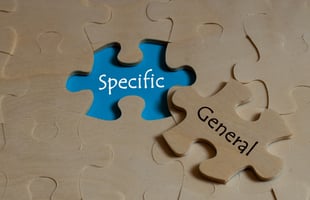You’re a manager at an enterprise level company and you have a team of employees to oversee. You...
Key Steps In Workforce Planning
The world is changing, and rapidly. How enterprises respond to this change is dependent on their ability to adapt quickly and effectively. While big companies may have the resources to do so, small-to-medium enterprises (SMEs) often struggle to keep pace. This means that SMEs must find ways of developing their workforce planning practices in order to compete effectively in a market that is increasingly driven by technology and automation.
Development of workforce scenario models
An initial step is to develop a workforce scenario model, which is an essential component of any workforce planning activity. A scenario model will help you identify the skills needed for your organization’s future and determine how many people with those skills should be trained so that your company can grow and evolve successfully over time.
The Faethm software provides everything you need to create a strategic workforce planning model that can help drive sustainable automation decisions like hiring or training new workers today while still maintaining the highest levels of productivity tomorrow.
Development of technology/automation scenario models
Another key step in developing a workforce planning strategy is to develop technology/automation scenario models. An automation scenario model is a set of scenarios that describe how your company will be using technology and automation over time. These scenarios can be developed using both qualitative and quantitative methods, which may include interviews with senior leadership teams, a review of recent initiatives, or even data analysis from existing operations.
Once these future integrated scenarios have been identified, you will then need to incorporate them into business strategy by aligning capabilities across all departments within the organization. This includes:
- Mapping enterprise capabilities to future, integrated scenarios; assessing capability gaps in enterprise for scenarios and risks to current, future operations.
- Identifying areas where new technologies are needed for each scenario type; defining skills associated with different types of operation activities.
- Determining which roles should be replaced by machines in order for optimal efficiency outcomes.
- Determining what kinds of skills will be needed most frequently over time due their importance during specific phases within each process cycle (e.g., front end vs back end).
Mapping of enterprise capabilities to future, integrated scenarios
This involves mapping of enterprise capabilities to future, integrated scenarios. This step is critical for ensuring that each scenario is consistent with your strategic goals and objectives as an organization.
The next step in workforce planning is an assessment of capability gaps in enterprise for scenarios and risks to current, future operations. The goal here is to identify areas where you will need additional talent (skills) or technology in order to meet the needs of each scenario identified by management.
After your team has assessed their gaps, it’s time to design and implement a workforce planning program that takes into consideration these identified gaps and risks. As part of this process, we recommend using agile risk management processes across the enterprise so that everyone can participate equally in identifying possible solutions as well as mitigating any associated risks at all levels within an organization — from top executives down through frontline workers.
Assessment of capability gaps in enterprise for scenarios and risks to current, future operations
In order to effectively plan for the future, you need to assess your current state. The assessment can be done in two ways:
-
Assess the impact of future scenarios on current operations. This includes evaluating how each scenario would affect things like people and technology. You should also evaluate who would be impacted by these changes and what resources they could use if their roles changed or were eliminated completely.
-
Assess the impact of future scenarios on workforce capability gaps. In order to do this, you must determine which skills are needed for each scenario and assess whether or not your workforce has those skills currently (or if they can be trained).
Design and implementation of workforce planning program to address identified gaps and risks
Workforce planning programs are a long-term strategic process that involves a number of steps. These include:
-
Assessing the current workforce situation and identifying gaps, risks and opportunities
-
Creating a vision and strategy for future human capital needs
-
Developing action plans to address gaps, risks and opportunities
-
Implementing the action plans - this will involve working with stakeholders across the enterprise on areas such as training, recruitment and retention
These are the key steps that enterprises ought to be taking in order to prepare themselves for a changing labour market
Workforce planning is a proactive approach to managing workforce risks. It involves identifying the key challenges that your organization may face in the future and taking steps today to prepare for them.
Workforce forecasting, on the other hand, is a reactive approach that looks back at historical data and trends in order to predict future demand for labour.
Why you should invest in workforce planning:
-
It will allow you to make informed decisions about how much time and money to invest in training new employees or retaining existing ones.
-
You'll be able to assess your risk exposure with regards to hiring practices as well as employee turnover rates so that you can take preventative action before things get out of hand.



